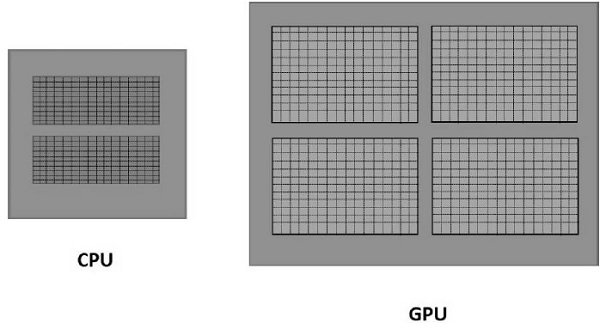Rendering
Rendering is the process of generating an image from a model using computer programs. In graphics, a virtual scene is described using information like geometry, viewpoint, texture, lighting, and shading, which is passed through a render program. The output of this render program will be a digital image.There are two types of rendering −
- Software Rendering − All the rendering calculations are done with the help of CPU.
- Hardware Rendering − All the graphics computations are done by the GPU (Graphical processing unit).
WebGL follows a client-based rendering approach to render 3D scenes. All the processing required to obtain an image is performed locally using the client's graphics hardware.
GPU
According to NVIDIA, a GPU is "a single chip processor with integrated transform, lighting, triangle setup/clipping, and rendering engines capable of processing a minimum of 10 million polygons per second."Unlike multi-core processors with a few cores optimized for sequential processing, a GPU consists of thousands of smaller cores that process parallel workloads efficiently. Therefore, the GPU accelerates the creation of images in a frame buffer (a portion of ram which contains a complete frame data) intended for output to a display.

GPU Accelerated Computing
In GPU accelerated computing, the application is loaded into the CPU. Whenever it encounters a compute-intensive portion of the code, then that portion of code will be loaded and run on the GPU. It gives the system the ability to process graphics in an efficient way. GPU will have a separate memory and it runs multiple copies of a
small portion of the code at a time. The GPU processes all the data
which is in its local memory, not the central memory. Therefore, the
data that is needed to be processed by the GPU should be loaded/copied
to the GPU memory and then be processed.
GPU will have a separate memory and it runs multiple copies of a
small portion of the code at a time. The GPU processes all the data
which is in its local memory, not the central memory. Therefore, the
data that is needed to be processed by the GPU should be loaded/copied
to the GPU memory and then be processed.In the systems having the above architecture, the communication overhead between the CPU and GPU should be reduced to achieve faster processing of 3D programs. For this, we have to copy all the data and keep it on the GPU, instead of communicating with the GPU repeatedly.

No comments:
Post a Comment